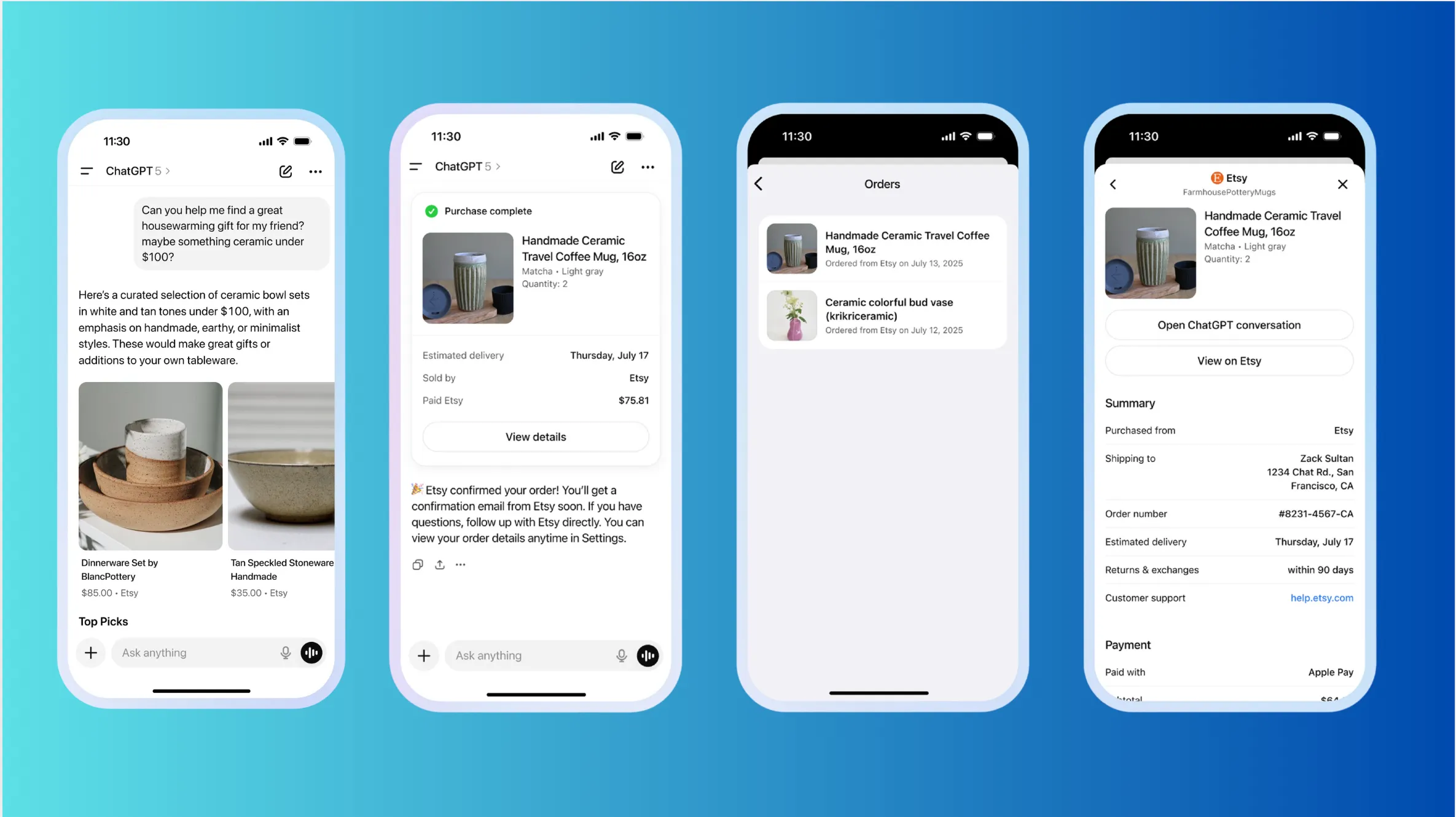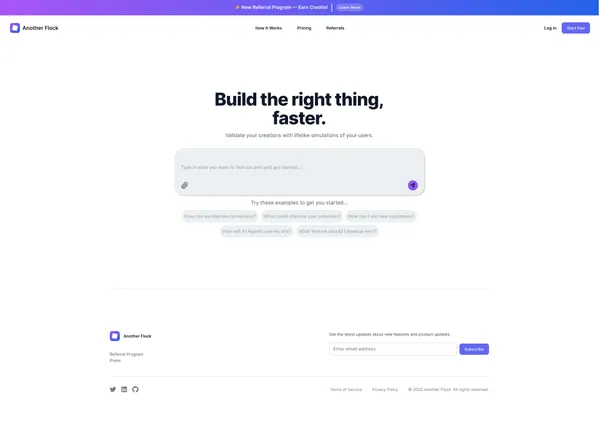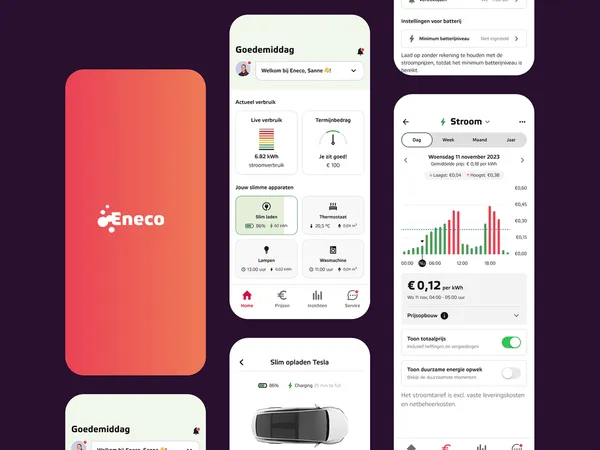AI Strategy for Mid-Market Consumer Businesses: 10 Game-Changing Announcements from 2024-2025

Rob Pisacane
Founder
Published Date
October 15, 2025
Introduction
The past year has delivered a flood of AI announcements from tech giants. For consumer-facing businesses that were around before this AI boom happened, the challenge isn’t just keeping up with every release—it’s understanding which capabilities will fundamentally change how your customers expect to interact with you, and which ones you should be building into your product strategy now.
This isn’t about implementing AI for the sake of it. It’s about recognizing that your competitors and your customers are already adapting to these new capabilities. Within 12 months, customer expectations will have shifted dramatically. The question is: will your business be ready?
10 AI Announcements That Matter for Your Business
1. OpenAI Sora: Professional Video Creation Without the Production Budget
Announced: December 2024 What it is: AI that generates up to 20-second professional-quality videos from text descriptions
Why it matters for you: Video content has been expensive and time-consuming to produce. Sora democratizes video creation. A £50M retail brand can now produce product demos, tutorial content, or social media videos at a fraction of the cost and time of traditional production.
Strategic implication: The bar for content quality stays high, but the cost of production drops dramatically. Businesses that can’t produce regular video content today suddenly can. This means more content, faster iteration, and the ability to test video campaigns that were previously cost-prohibitive.
2. Anthropic Computer Use: AI That Operates Your Systems Like a Human
Announced: October 2024 What it is: AI that can control computer interfaces—moving cursors, clicking buttons, navigating applications autonomously
Why it matters for you: This isn’t just automation of APIs—it’s AI that can interact with any software interface, even legacy systems that were never designed for automation. A customer service team can deploy AI that handles repetitive tasks across multiple platforms without expensive system integration.
Strategic implication: The bottleneck shifts from “what can we technically integrate?” to “what should we automate?” Tasks that required human interface navigation (data entry across systems, order processing, inventory checks) become automatable even without modern APIs.
3. Google Gemini 2.0: Agentic AI That Completes Multi-Step Tasks
Announced: December 2024 What it is: AI with “agentic capabilities” that can break down complex goals and execute them autonomously
Why it matters for you: Previous AI required you to prompt each step. Agentic AI takes a high-level instruction (“research competitors’ pricing and create a comparison report”) and determines the necessary steps, executes them, and delivers the result.
Strategic implication: The difference between “AI-assisted” and “AI-completed” work. Instead of speeding up existing workflows, you can eliminate entire manual processes. Think about customer research, competitive analysis, or content creation pipelines that currently require significant human oversight.
4. Apple Intelligence: Privacy-First AI Processed On-Device
Announced: June 2024, expanding through 2025 What it is: AI capabilities that run entirely on user devices without sending data to cloud servers
Why it matters for you: Consumer privacy concerns have been a barrier to AI adoption. Apple’s approach—processing sensitive data locally—sets a new standard for privacy-conscious AI. Features like on-device writing assistance, image generation, and intelligent notifications run without data leaving the device.
Strategic implication: Privacy becomes a competitive differentiator. Businesses that can offer AI-powered personalization without collecting sensitive customer data will have an advantage. This also opens opportunities for AI features in privacy-sensitive sectors (health, finance, children’s products) that were previously off-limits.
5. OpenAI ChatGPT Search: Real-Time Web Information in Conversational AI
Announced: December 2024, rolled out to all free users What it is: Integration of real-time web search directly into ChatGPT conversations
Why it matters for you: Customers are increasingly using conversational AI as their first stop for information—before Google, before your website. ChatGPT Search means AI assistants can now provide current information about products, pricing, availability, and reviews without users leaving the conversation.
Strategic implication: Your digital presence needs to be optimized for AI discovery, not just Google SEO. If AI assistants are searching the web for product information, can they find accurate information about your offerings? This is the beginning of “AI-first” search optimization.
6. Anthropic Extended Context: Processing 1 Million Tokens at Once
Announced: August 2025 What it is: AI that can process the equivalent of 750,000 words or 75,000 lines of code in a single request
Why it matters for you: This isn’t just bigger—it’s qualitatively different. You can now feed an AI your entire product catalog, years of customer support conversations, or complete policy documentation and ask questions or generate insights across all of it simultaneously.
Strategic implication: Knowledge management transforms from search-and-retrieve to comprehensive analysis. Instead of finding the relevant document, AI can synthesize insights across your entire knowledge base. This enables sophisticated customer support, product recommendations, and business intelligence that was previously impossible without data science teams.
7. Google AI Overviews: 1.5 Billion Users Getting AI-Generated Search Results
Announced: 2025, globally rolled out What it is: Google’s AI-generated summaries appear at the top of search results for 1.5 billion monthly users
Why it matters for you: This fundamentally changes how consumers discover products and services. When searching for “best running shoes for marathon training,” users see an AI-generated overview synthesizing information from multiple sources—before they click any individual link.
Strategic implication: Traditional SEO focused on ranking #1 for keywords. Now, you need to appear in AI-generated summaries. This means structured data, clear product information, and authoritative content that AI can confidently cite. Zero-click searches become the norm—your website may not get the click, but your brand still needs to be in the answer.
8. OpenAI o3: Advanced Reasoning for Complex Problem-Solving
Announced: December 2024 What it is: AI with significantly enhanced reasoning capabilities for multi-step logical problems
Why it matters for you: Previous AI was excellent at pattern matching and language tasks but struggled with complex reasoning. o3 can handle sophisticated analytical tasks—financial modeling, strategic planning, technical troubleshooting—that previously required expert human judgment.
Strategic implication: The boundary between “AI can help” and “AI can decide” shifts. Tasks like pricing optimization, inventory forecasting, customer segmentation, and even product roadmap analysis can move from AI-assisted to AI-driven. The question becomes: where do you want human judgment in the loop?
9. Anthropic Artifacts: Real-Time Code and Content Creation
Announced: June 2024 What it is: AI-generated content (code, designs, documents) that renders live in a preview window for immediate iteration
Why it matters for you: The creation-to-revision cycle collapses. Instead of describing what you want, reviewing a draft, and providing feedback over multiple rounds, you see results instantly and can iterate in real-time. A marketing manager can prototype landing pages, email templates, or ad variations without designer bottlenecks.
Strategic implication: Speed of execution becomes a competitive advantage. Teams can test more variations, launch campaigns faster, and reduce dependency on specialized resources. The constraint shifts from “do we have capacity to create this?” to “is this worth testing?“
10. OpenAI Instant Checkout: Native Commerce in Conversational AI
Announced: 2025 What it is: Direct purchasing from Shopify and Etsy stores within ChatGPT conversations
Why it matters for you: The customer journey is being compressed. Discovery, research, and purchase can now happen in a single conversational thread without leaving the AI interface. A customer asking “I need a birthday gift for my sister who likes sustainable fashion, budget £50” can complete the purchase without opening a browser.
Strategic implication: Commerce is becoming embedded in conversation. If you’re not present in these conversational commerce channels, you’re invisible to a growing segment of customers. This also means customer acquisition costs may shift—from paying for ad clicks to ensuring your products are recommended by AI assistants.
Answering the Critical Strategic Questions
”What should we build given these AI announcements?”
The answer depends on your biggest friction points:
If your constraint is content creation: Start with Sora-style video generation or finding ways to rapidly generate variants of a core creative campaign using AI. These tools collapse the time and cost of producing marketing materials, product demos, and customer education content.
If your constraint is customer service capacity: Look at Computer Use and agentic AI. These can handle repetitive support tasks, process orders across legacy systems, and manage routine customer interactions without hiring proportionally to growth.
If your constraint is personalisation at scale: Extended context and advanced reasoning models enable sophisticated personalisation without building complex recommendation engines. You can analyze individual customer histories and preferences in real-time.
If your constraint is privacy-conscious customers: Apple Intelligence’s on-device approach shows there’s a path to AI personalisation that doesn’t require collecting sensitive data. This is particularly relevant for health, financial services, or children’s products.
The meta-answer: Don’t build everything. Identify the one or two customer interactions where AI could eliminate the most significant friction, and focus there. The businesses that win aren’t those that implement the most AI features—they’re those that use AI to remove the biggest obstacles to customer value.
”How will our customers expect to interact with us in 12 months?”
Based on these announcements, expect these shifts:
1. Conversational commerce becomes mainstream Customers will expect to research, ask questions, and complete purchases in conversation—whether that’s with your chatbot, ChatGPT, or voice assistants. The “browse website → add to cart → checkout” flow will be one option among many, not the default.
Practical implication: Your product information needs to be accessible to AI systems. This means structured data, clear specifications, and integration with conversational commerce platforms. If an AI can’t accurately describe and recommend your products, you’re invisible to conversational shoppers.
2. Real-time, personalized content becomes expected Customers won’t wait for you to create content for their specific situation. They’ll expect AI to generate personalized recommendations, customized solutions, and tailored advice on-demand.
Practical implication: Your content strategy shifts from “create comprehensive guides for common scenarios” to “provide AI with the information to generate personalized guidance for any scenario.” This means well-structured knowledge bases, clear product taxonomies, and potentially AI integration into your customer-facing content.
3. Privacy-preserving personalization becomes a differentiator As Apple demonstrates, customers don’t have to choose between AI-powered experiences and privacy. Businesses that can offer sophisticated personalization without collecting sensitive data will have an advantage.
Practical implication: Rethink your data collection practices. Do you need to store sensitive customer information centrally, or can you deliver personalized experiences with on-device AI or privacy-preserving techniques?
4. Multi-step autonomous assistance becomes normal Customers won’t break complex requests into individual steps—they’ll expect AI to understand intent and complete multi-step tasks autonomously. “Help me plan a surprise anniversary dinner” should result in recommendations, reservations, and reminders without additional prompting.
Practical implication: Your customer service and product experiences need to handle complexity without pushing it back to the customer. This might mean AI agents that can navigate your systems to complete tasks, or integration with agentic AI platforms that coordinate across multiple services.
5. Discovery shifts from search to recommendation With AI Overviews and conversational search, customers increasingly discover products through AI-generated recommendations rather than browsing search results. Being in the AI’s recommendation set becomes as important as ranking on page one of Google.
Practical implication: Optimize for AI citation, not just SEO. This means authoritative content, clear product information, strong reviews, and potentially partnerships with AI platforms to ensure your products appear in relevant recommendations.
”Which AI capabilities matter for our users?”
The right capabilities depend on your customer journey’s friction points:
For businesses with complex product selection:
- Advanced reasoning (o3) helps customers navigate complicated decisions
- Extended context allows AI to consider entire product catalogs and customer preferences simultaneously
- Conversational search helps customers articulate needs and discover suitable products
For businesses with high-touch customer service:
- Computer Use automates routine tasks across systems
- Agentic capabilities handle multi-step support workflows autonomously
- Extended context gives support AI access to complete customer history
For businesses dependent on content marketing:
- Sora video generation enables affordable video content production
- Artifacts accelerates content creation and iteration
- Real-time web search ensures content stays current and relevant
For businesses with privacy-conscious customers:
- On-device AI processing provides personalization without data collection
- Privacy-preserving approaches become differentiators in sensitive categories
For businesses with long sales cycles:
- Advanced reasoning helps with complex problem-solving and consultative selling
- Extended context enables AI to understand nuanced customer situations
- Multi-step agentic AI can nurture leads through sophisticated workflows
Practical Next Steps: A Framework for Action
Phase 1: Assessment (Next 30 Days)
Map your customer journey friction:
- Where do customers get stuck or frustrated?
- What questions do they repeatedly ask?
- What tasks require human intervention that shouldn’t?
Evaluate your AI readiness:
- Is your product information structured and accessible?
- Can AI systems discover and cite your business?
- Do you have knowledge bases that AI can leverage?
Identify quick wins:
- Which AI capabilities could remove the biggest friction points?
- What can you implement without major system overhauls?
- Where are competitors already using AI effectively?
Phase 2: Experimentation (Next 90 Days)
Start with one high-impact use case:
- Don’t try to implement everything
- Choose the capability that removes the most significant customer friction
- Set clear success metrics before you start
Test AI discoverability:
- Search for your products/services using ChatGPT with search enabled
- Check if AI Overviews feature your business for relevant queries
- Evaluate whether AI can accurately describe your offerings
Prototype conversational experiences:
- Use existing tools (ChatGPT, Claude, Gemini) to prototype customer interactions
- Test if AI can answer customer questions using your public information
- Identify gaps in your content or data structure
Phase 3: Integration (Next 6-12 Months)
Build AI-first customer touchpoints:
- Implement conversational commerce if relevant to your business model
- Create AI-optimized content and product information
- Integrate AI capabilities into your core customer experience
Develop organizational AI literacy:
- Train teams on AI capabilities and limitations
- Establish guidelines for AI use in customer-facing contexts
- Create feedback loops to improve AI implementations
Prepare for agentic interactions:
- Ensure your systems can interface with AI agents
- Develop policies for AI-mediated customer relationships
- Build monitoring and quality assurance for autonomous AI interactions
Conclusion: The Opportunity for Mid-Market Businesses
The AI capabilities announced in the past year aren’t just incremental improvements—they represent a fundamental shift in what’s possible without massive technical teams or budgets. For the first time, mid-market consumer businesses can deploy sophisticated AI that was previously only accessible to tech giants.
The challenge isn’t just technical, it’s also about figuring what strategy to choose and experimenting with how your customers react to this new technology. The businesses that will thrive aren’t those that implement the most AI features, but those that thoughtfully apply AI to remove the biggest obstacles between their customers and value.
Your customers’ expectations are being shaped by these AI capabilities right now. They’re experiencing conversational commerce, AI-generated content, and autonomous assistance in other parts of their digital lives. Within 12 months, these won’t be novel features—they’ll be baseline expectations.
The question isn’t whether to engage with these AI capabilities. It’s whether you’ll proactively shape how AI enhances your customer experience, or reactively respond when customers expect capabilities you haven’t implemented.
The mid-market opportunity is clear: the cost and complexity of sophisticated AI has dropped dramatically. The businesses that recognize this shift and act decisively will gain significant competitive advantages over those that wait.
This article is based on announcements from OpenAI, Anthropic, Google, and Apple through October 2025. The AI landscape evolves rapidly—use these insights as a strategic framework, not a static playbook.
What we've worked on lately.
View All
We Built an AI Research Tool in a Month
We built Another Flock's AI research platform in just one month—from initial concept to live product. It gives teams instant synthetic user feedback on their ideas, designs, and marketing materials.

Using AI to Boost Online Impulse Buys
We worked with a global consumer goods company to tackle a big problem: people don't impulse-buy online like they do in physical stores. Together, we identified and prototyped AI solutions that suggest smart product combinations to shoppers, helping boost those spontaneous purchases.

Launching a New Energy Pricing Model
We helped Eneco launch one of the Netherlands' first major dynamic energy tariffs in September 2023. Through user research, rapid prototyping, and brand work, we created a proposition that attracted environmentally conscious customers looking for more control over their energy costs.
"Nesta worked with The Product Bridge throughout 2024 to build and scale our Visit a Heat Pump service, transforming it from a proof of concept into a live, nationwide offering."

Alasdair Hiscock
Design Lead, Nesta